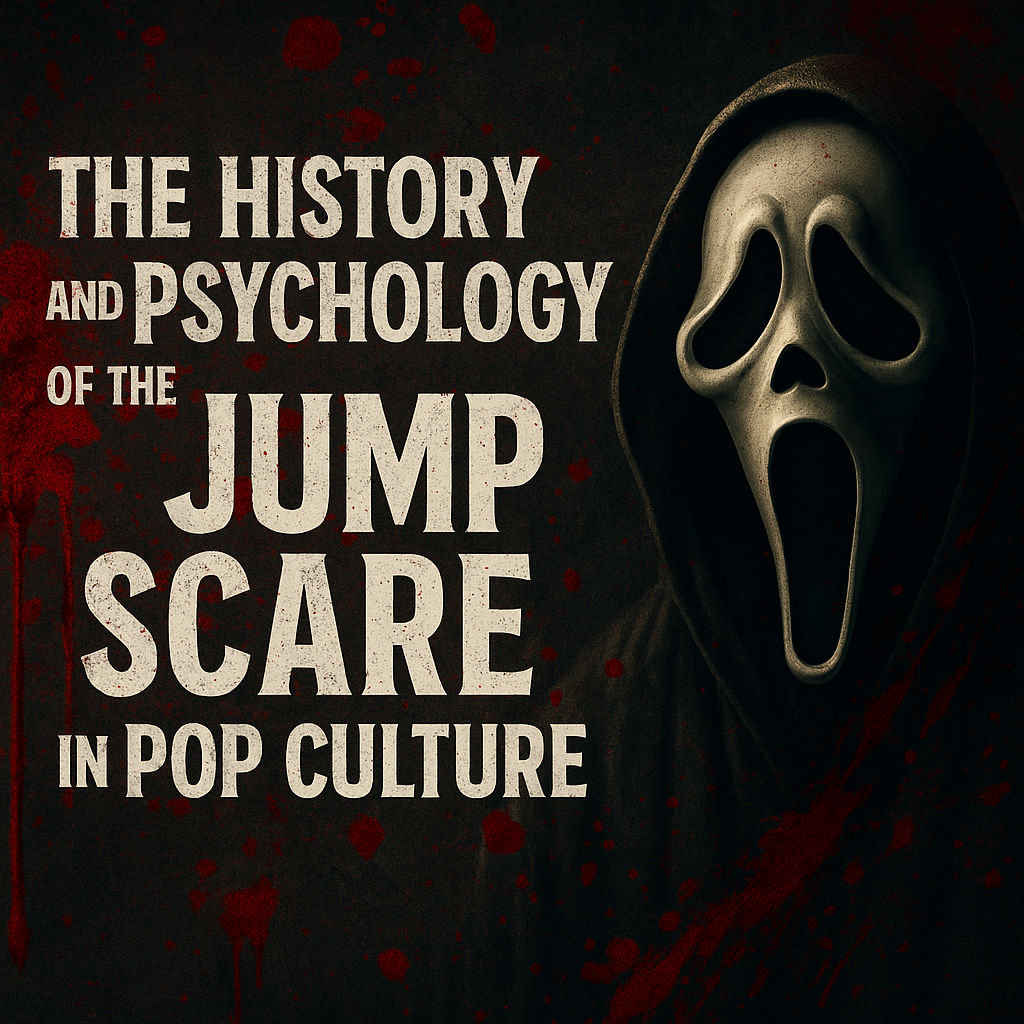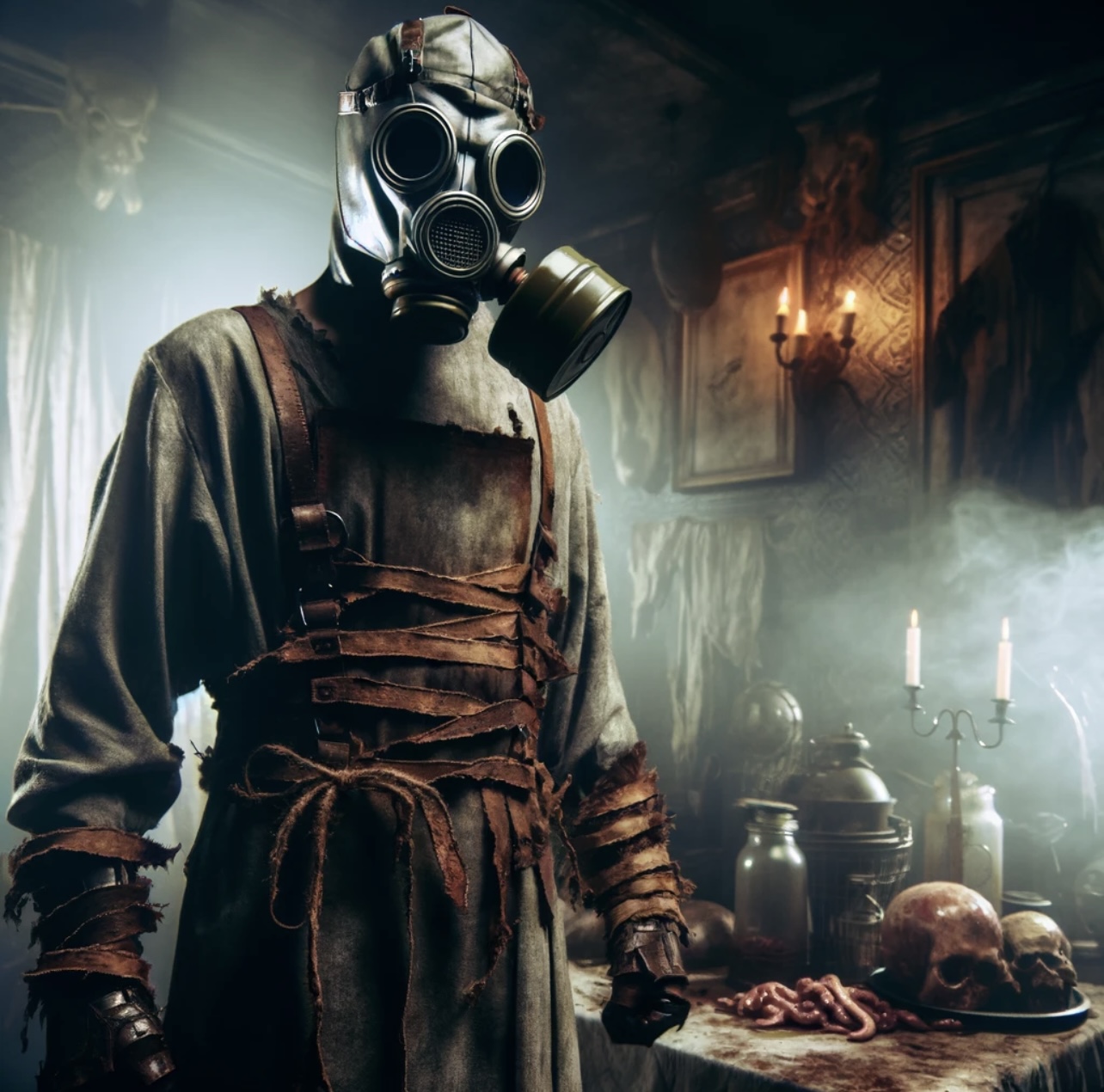
Why does a sudden jolt of fear make our hearts race, our adrenaline spike, and, strangely; why do we enjoy it?
Imagine sitting in a dark theatre, the silence so heavy you can hear your own heartbeat. Suddenly, a shriek pierces the air, and something leaps out of the shadows. This is the essence of the jump scare, a moment designed to electrify the nervous system and leave audiences shaken, thrilled, or laughing nervously in the aftermath.
What Is a Jump Scare and Why Do We Love It?
Jump scares are sudden moments of surprise that disrupt silence or suspense with an explosive, often terrifying stimulus. Despite their simple structure, they have captivated audiences across generations. But why?
Psychologically, jump scares trigger a primitive survival response. The body floods with adrenaline, the amygdala activates, and we experience a rush of fear followed by relief. It’s this pendulum swing between fear and safety that makes the experience oddly enjoyable.
Ancient Origins of Fear as Entertainment
The instinct to frighten and be frightened isn’t new. Ancient Egyptians were known to protect tombs with psychological and physical deterrents, hidden chambers, curses etched into walls, and booby traps meant to confuse or terrify tomb robbers.
(Source: World History)
In ancient Greek and Roman theatre, dramatic devices like the ekkyklema (a rolling platform for revealing dead bodies) and deus ex machina created shock and awe. With trapdoors, fog, and sudden reveals, these early tactics laid the groundwork for what would become today’s haunted attractions and horror effects.
(Source: Britannica)
The Birth of Jump Scares in Early Cinema
The cinematic jump scare finds its roots in early silent films. In The Phantom of the Opera (1925), Lon Chaney’s unmasked face shocked audiences with its grotesque reveal.
Then came the legendary 1942 film Cat People, directed by Jacques Tourneur. In one iconic moment, a woman walks alone at night. The suspense builds slowly until a sudden hiss of a bus brakes (now known as the “Lewton Bus”) jolts both character and viewer.

Alfred Hitchcock and the Power of Suspense
Alfred Hitchcock, the so-called “Master of Suspense,” took the jump scare to new heights. His 1960 classic Psychofeatured what is arguably the most iconic jump scare in history: the infamous shower scene. Marion Crane’s brutal fate, delivered with piercing violins and sharp cuts, left an indelible mark on pop culture.
(Source: The Joy of Movies)
Hitchcock’s genius lay in understanding that anticipation could be more terrifying than the scare itself.
Ghost Trains and Carnival Rides: The Physical Jump Scare
The physical counterpart to cinematic frights can be found in ghost trains and carnival haunted houses. Popular since the early 20th century, these rides blend immersive sets with unpredictable frights: animatronic ghouls lunging from darkness, sudden sounds, and eerie lighting.
(Source: America Haunts)
These early haunted attractions helped ingrain the jump scare into physical entertainment culture, a tradition that continues today in escape rooms and haunted experiences.

The Golden Age of Horror Films: 1970s–1980s
The 1970s and 1980s cemented the jump scare’s place in modern horror. Films like The Exorcist and The Texas Chainsaw Massacre introduced raw, chaotic energy that set the tone for what was to come.
John Carpenter’s Halloween (1978) redefined the art of suspense. The combination of silence, perspective shots, and abrupt violence created a nerve-shattering experience that’s still imitated today.
Jump Scares in Video Games: Fear You Control
The jump scare found new power in interactive horror games. Franchises like Resident Evil, Silent Hill, and Five Nights at Freddy’s turned players into participants.
Unlike films, where scares happen to you, games make you walk into the fear.
The immersion, interactivity, and unpredictability of gaming make the jump scare even more potent, heightening tension and making every hallway a potential trap.
Why Jump Scares Work: The Neuroscience of Fear
So what makes a jump scare feel so visceral?
It’s all about your brain’s fight-or-flight response. The amygdala—your fear centre—kicks into gear when it detects danger, triggering a cascade of physical responses: quickened heartbeat, muscle tension, alertness.
After the scare passes, your body releases dopamine and endorphins. This relief response can feel exhilarating, even humorous.
For instance, peekaboo is one of the first jump scares babies experience. The startle is followed quickly by laughter, proving our instinct to enjoy controlled fear starts young.
(Source: Fernald & O’Neill, 1993)
The Science of Enjoying Fear
A 2020 study by Andersen et al. found that people have the most fun at haunted attractions when they experience a moderate level of fear—not too little, not overwhelming.
Using heart rate monitors and video footage in real-world haunted houses, the study revealed a sweet spot of arousal where enjoyment and fear coexist.
(Source: Psychological Science)
In other words, the just-right scare is the one you’ll talk about for days.
Sound, Silence, and the Timing of Terror
Jump scares aren’t just about what you see, they’re about what you hear and don’t hear.
Long silences build anxiety, making the eventual loud noise unbearable. Directors and game designers exploit this expertly: a well-timed bang in absolute silence can shock even the most seasoned horror fan.
Timing is everything. A scare that comes too soon falls flat. Too late, and the tension fizzles. The best scares are surgical.
Jump Scares Today: From Pop Culture to Real-Life Experiences
From ancient curses to Hitchcock, from haunted rides to survival horror games, the jump scare has remained a constant in fear-based entertainment. It adapts, evolves, and continues to surprise us even when we think we know it’s coming.
But no article or video can truly capture what a well-executed jump scare feels like in person.
Experience the Thrill for Yourself at Containaphobia in Geelong
Reading about fear is one thing; experiencing it is another.
At Containaphobia, you can step inside horror itself. Our horror-themed escape rooms are packed with immersive environments, twisted stories, and expertly crafted jump scares.
Face the haunted madness of Mayhem Manor
Try to escape a cannibal’s clutches in Carnivorous
Whether you’re looking for thrilling indoor activities in Geelong or just want a scare you’ll never forget, Containaphobia delivers the real thing. No screen required.
The Final Jolt
The jump scare is more than a gimmick. It’s an art form that taps into our biology, our history, and our sense of play. From ancient warnings to modern masterpieces, it’s clear that we don’t just tolerate fear; we seek it out.
So the next time your heart leaps into your throat, remember: you’re participating in one of humanity’s oldest thrills.
Are you ready for yours?
Sources
Andersen, M. M., et al. (2020). Playing With Fear: A Field Study in Recreational Horror. Psychological Science
Fernald, A., & O’Neill, D. K. (1993). Peekaboo Across Cultures.






